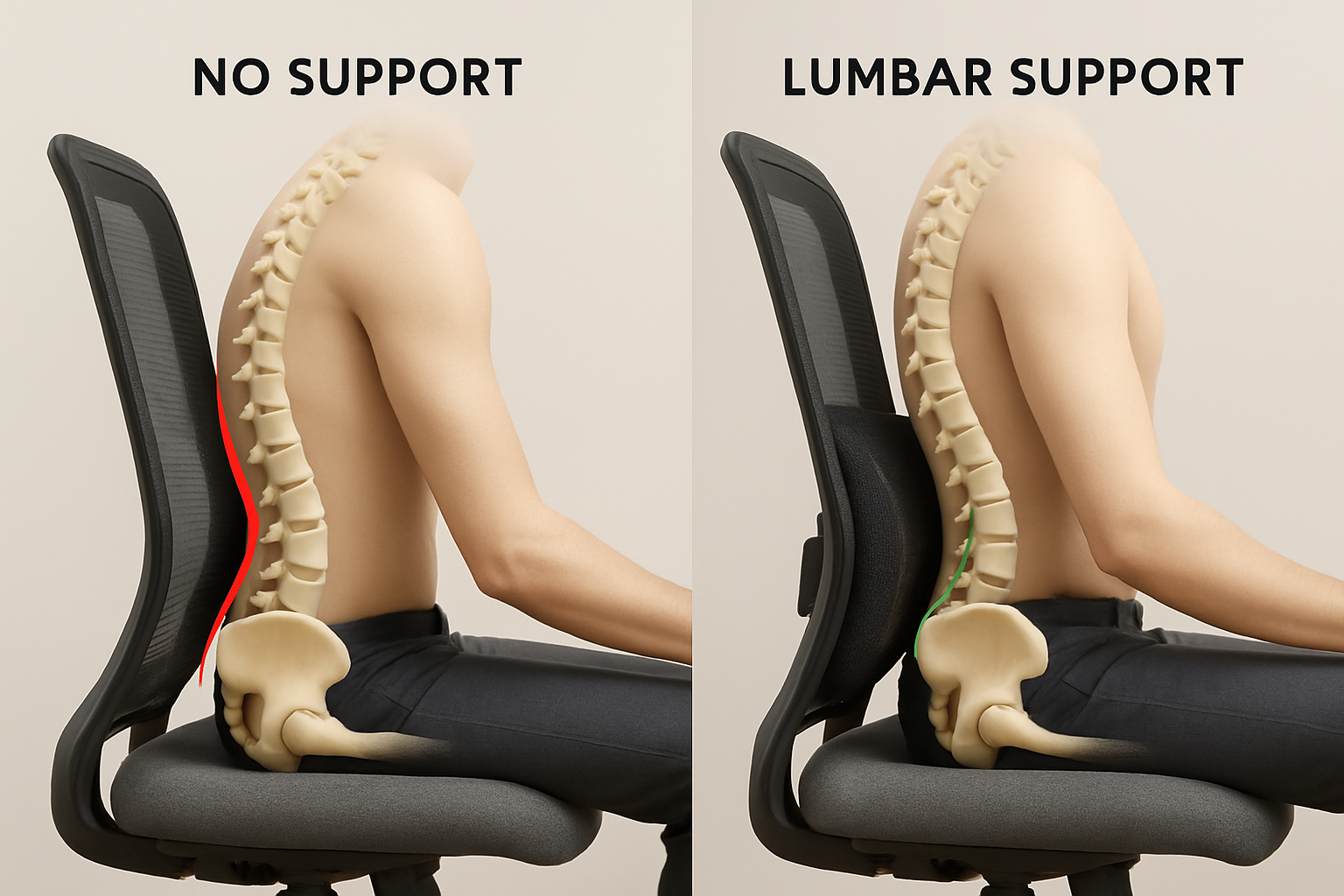The Science of Lumbar Support: Small Adjustments, Big Relief

If you have ever ended a long workday with a stiff lower back or a dull ache in your spine, chances are your chair isn’t doing its job. Lumbar support—often overlooked in office seating—is one of the simplest yet most effective tools for back pain relief. The right support can transform how your body feels after hours of sitting, and the science behind it is fascinating.
What Is Lumbar Support?
The term lumbar refers to the lower part of your spine, specifically the five vertebrae between your rib cage and pelvis. This area naturally curves inward, forming a gentle “C” shape. Lumbar support is any feature in a chair that supports and maintains this natural inward curve while sitting.
When this curve is unsupported, your lower back tends to flatten or round out. Over time, that small misalignment leads to compressed spinal discs, tightness in muscles, poor posture habits and an increased risk of chronic back pain.
Why the Lower Back Matters So Much
Your lower back works harder than you might think. It supports your upper body’s weight, allows movement, and protects spinal nerves. When it is not aligned, the entire chain of posture from neck to hips is affected. Poor lumbar support can also cause slouching, which adds stress on the mid-back and shoulders.
The Science Behind Lumbar Support
Here’s why lumbar support is so effective:
- Restores Natural Spinal Curvature
By filling the gap between your chair and the natural inward curve of your lower back, lumbar support redistributes weight evenly along your spine. This reduces strain on muscles and ligaments. - Reduces Spinal Disc Pressure
When you slouch, spinal discs are squeezed unevenly, which can accelerate wear. Proper lumbar support helps keep discs aligned and reduces uneven pressure. - Improves Blood Flow
Good posture allows blood to flow freely, ensuring that oxygen and nutrients reach spinal tissues, reducing fatigue and stiffness. - Supports Core Muscles
A supported spine allows the core muscles to engage naturally without overcompensating, leading to better balance and less muscle fatigue.
Real-World Example: A Small Adjustment, Big Relief
Consider Rajesh, a 32-year-old graphic designer who spent years in a chair without lumbar support. By mid-afternoon, his back would ache, and his focus would vanish. After switching to an ergonomic chair with adjustable lumbar support, he noticed that back pain reduced within two weeks, his sitting posture improved automatically, and he could focus longer without the distraction of discomfort.
Rajesh didn’t change his workload—just his seating. That single adjustment created a huge impact on his daily comfort and productivity.
Types of Lumbar Support
Modern ergonomic chairs use different types of lumbar systems:
Fixed Support: A built-in curve designed to fit most users.
Adjustable Support: Height and depth adjustments allow a customized fit.
Dynamic Support: Moves with you, maintaining alignment during small shifts or reclines.
For the best results, adjustable lumbar support is recommended, as no two spines are exactly the same.
How to Set Up Lumbar Support Properly
- Position the support at your lower back. It should sit at your lumbar curve, just above the waistline.
- Adjust depth. Move it forward or backward until it fills the natural gap between your back and the chair.
- Maintain a 90°-100° hip angle. Your hips and knees should be at right angles, with feet flat on the floor.
Beyond the Chair: Good Habits Matter
Even with excellent lumbar support, good habits matter. Take short breaks every 30–45 minutes to stand and stretch. Avoid leaning forward toward your screen; instead, bring the screen closer or raise it. Strengthen your core through light exercises to complement spinal support.
Conclusion
The science of lumbar support proves that sometimes the smallest adjustments—just a few centimeters of cushioning—can make the biggest difference. Whether you work in an office or from home, investing in a chair with proper lumbar support isn’t a luxury; it’s a long-term investment in your health, comfort, and productivity.





